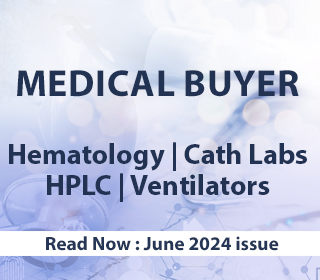International Circuit
Slower transition to MDR, IVDR risk medical device shortages
Implementation of two regulations on medical devices and in vitro diagnostic medical devices is failing, despite the tweaks made earlier this year, posing shortage risks on one hand and outdated certification rules on the other.
The medical devices (MDR) and in vitro diagnostics (IVDR) regulations entered into force in 2017 and application in May 2021 and 2022 respectively, but with the transition to the new rules being slower than anticipated, EU healthcare systems risk shortages.
“We do have a problem six years after the publication of the regulations and years after the transitional measures. It’s really not working,” Manuel Pizarro, Portuguese health minister, told his European colleagues who gathered in Brussels on Thursday (30 November) for the Health (EPSCO) Council meeting.
Under the rules, all medical devices produced in Europe had to be re-certified through notified bodies (NB) – organisations designated by a member state to assess product conformity before being placed on the EU market. Currently, over 40 notified bodies have been designated under the MDR, a number that grew from 36 notified bodies a year ago and 12 NB under the IVDR.
As NBs struggled to meet the transition periods as 23,000 certificates needed approval with 36 NBs back in 2022 – emergency tweaks were made this year to extend the certification deadline from 2024 to 2027 and 2028 in some cases.
Under the new IVDR regulation, 80% of IVDs are subjected to notified body control, equating to around 24,000 IVD devices. As the issues were anticipated, the Commission proposed changes such as “a progressive roll-out” depending on the IVD class a year before the regulation was applied.
The length of the proposed transition periods for higher-risk devices, such as HIV or hepatitis tests (class D) and certain influenza tests (class C), have a transition period until May 2025 and 2026, whilst lower-risk ones, such as class B and A sterile devices, have a transition period until May 2027.
The unfolding failure of in-vitro certification
As the deadline for transitional periods for some IVDs is less than two years away, countries are sounding alarm bells.
“We have to be realistic. Colleagues, the transition deadlines in the in-vitro diagnostics regulation cannot be achieved,” said Sabine Dittmar, German parliamentary state secretary to the Federal Minister for Health.
She added that “there is no chance” of ensuring that all the needed class D IVDs will be certified by 2025.
Health Commissioner Stella Kyriakides, who was present at the meeting, shared the concerns about high-risk in vitro diagnostic devices. According to the Commissioner, there are more than 1,000 high-risk in vitro diagnostics on the market. According to the data from October, manufacturers submitted 335 applications for high-risk in vitro diagnostics and notified bodies have only issued 109 certificates. Certification takes around 18 months.
“These numbers are indeed worrying,” Kyriakides said, adding that the Commission is collecting additional data “to have a clear picture”.
She added that five EU reference laboratories will soon be designated for high-risk in vitro diagnostics.
Shared concerns across the health ministers
Supported by the Austrian, Belgian, Czech, Finnish, German, Irish, Italian, Luxembourg and Netherlands, France submitted an information note to the Council that raises concerns about supply disruptions and the disappearance from the European market of medical devices and IVD medical devices.
The submitted note said that issues were due to: “On the one hand, to the system’s ramp-up and to the requirements and timeframes necessary to designate NBs within this new framework and, on the other hand, to a lack of foresight on the part of some manufacturers”.
Aurélien Rousseau, French Minister for Health and Prevention, urged certifiers to “communicate as quickly as possible with the producers of these products about how they certify these products under the regulations so that we have an overview of all available products on behalf of our joint mission to combat shortages”.
“We must ensure that there is nothing that prevents diagnosis from taking place,” he added.
Another concern raised in the note is the postponement of the start of production of the EUDAMED database, with the current roadmap stating that it will come fully into force only in 2029.
This database is one of the key aspects of the two regulations, aimed to provide a living picture of the lifecycle of medical devices made available in the EU, enhancing overall transparency.
Italian health minister Orazio Schillaci came to the meeting with an offer to gradually implement the European database EU in two phases “rather than in a single one as is currently outlined”, he said.
It cannot be postponed forever
The system for placing medical devices on the market, which the EU is transitioning from, was put forward in the 1990s, unmatching the technological and scientific progress.
While the shortages are a critical issue, on the other hand, the postponement of the implementation of updated rules poses risks to patients, too.
Christopher Fearne, Malta’s deputy prime minister and health minister said he shares France’s concerns. “However, I have to put this out that on the ground at the moment, there is a lack of effective regulation which is leaving our patients to a certain extent, unprotected.”
“We have been discussing this medical devices regulation at least for 10 years. We cannot postpone this indefinitely, our patients at the moment are unprotected,” he urged, counting this meeting as his 20th EPSCO.
“We urgently need to get a dialogue between all stakeholders, industry, regulators, Commission and Member States to get to the bottom of this,” Fearne concluded. EURACTIV.com








